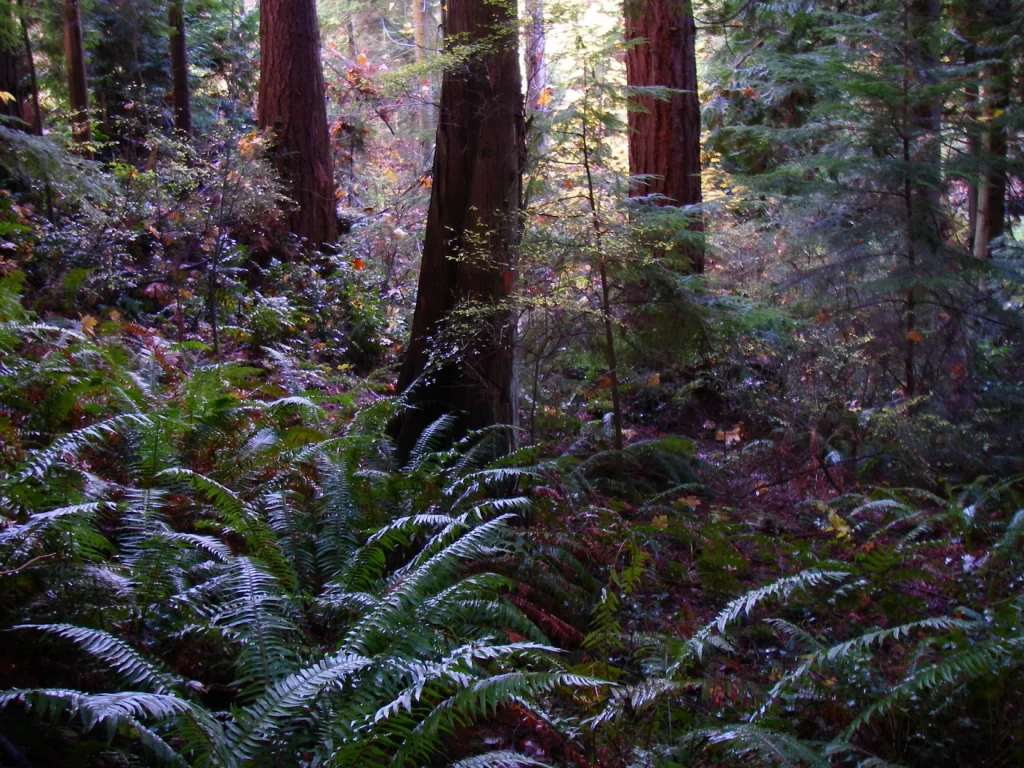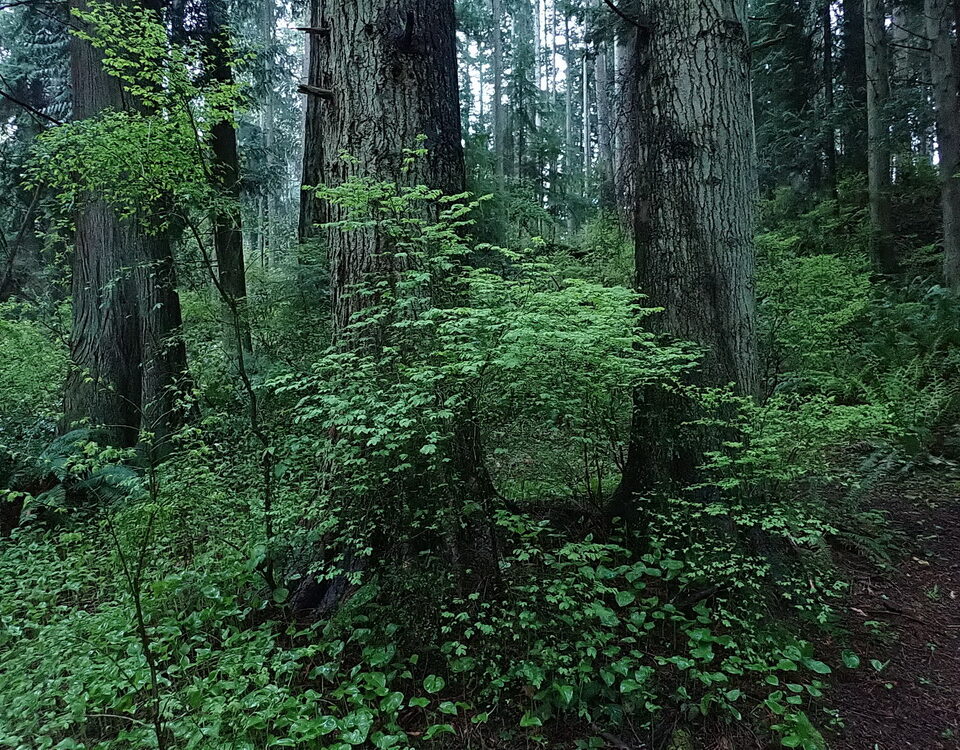Backyard forest restoration is all about retaining and promoting biodiversity. If your backyard forest was last logged over 75 years ago, it may be a “legacy” forest, one that has retained its biodiversity, with the “biological, structural, functional, and genetic legacies of old growth forests.”
Why do we have legacy forests?
Prior to World War II, when lumberjacks still relied on two-man crosscut felling saws, many less-than-perfect trees were left standing. When those forests naturally regenerated, they often grew into a diverse mix of conifers and deciduous trees that are now over 75 years old. After World War II, with the advent of the modern chainsaw, it was easy to cut every tree, and naturally regenerated forests were likely to be a less-diverse mix of Red Alder and Bigleaf Maple. In addition, beginning with the 1974 adoption of the Washington State Forest Protection Act, the rules requiring logged areas to be replanted, tended to produce monocultures of conifers.

Why is Biodiversity Important?
It’s easy to convince an environmentalist like me on the value of biodiversity, but how does one convince an ardent free-market capitalist? From an agricultural point of view, the main benefit of biodiversity is in the control of pests, including not only insects but, more importantly, viruses and bacteria. In monocultures, outbreaks can quickly wipe out entire crops. Research that quantifies the costs and benefits of investments in biodiversity has primarily been done with annual crops, but the same principles apply to commercial forestry, though over a much longer period of time.
Satakunta Forest Diversity Experiment
More than 20 years ago, Julia Koricheva and a team of researchers began a study to determine how biodiversity improves the productivity of forests (here). They planted different combinations of trees with between 1 and 5 species, randomly assigned to 114 separate plots in southern Finland. Multiple threads of data are being collected to track different aspects of the forests including: “tree growth and mortality; herbivory; predation; litter decomposition; fungal pathogens and mycorrhizal fungi; soil microbial processes; and understory vegetation.”
Dr. Koricheva’s project is but one of many being conducted all over the world dealing with the challenges of managing forests in a changing world. The Tree Diversity Network (TreeDivNet) is a platform for 29 projects worldwide facilitating meta-analysis and synthesis to help advance the science of biodiverse planted forests. Because of the inspiring work by Koricheva and others, the future managed forest will likely be much more diverse than the monocultural plantations of today.
And what about your backyard forest?
If you have a younger forest of mostly deciduous trees, then your restoration will likely include not only invasive removal, but also promoting biodiversity by planting a mix of shade-tolerant conifers (here). But if you are lucky enough to have a legacy forest, then it probably makes no sense to plant more trees (here and here), and your restoration efforts will largely consist of retaining biodiversity by removing invasive plants.
